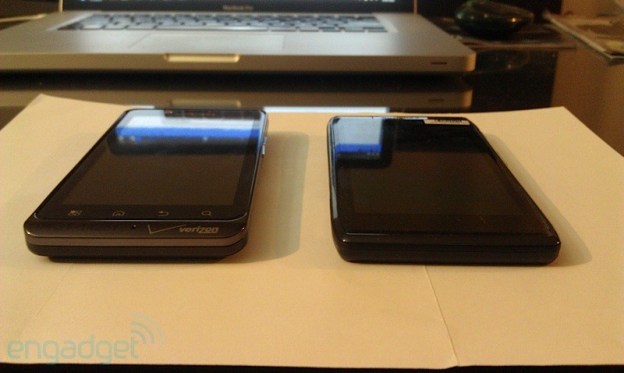
We’ve seen leaked images of the Motorola Droid Bionic before, but Engadget has posted a bunch of pictures of the device alongside a new friend: the Droid HD. The images were sent in by an anonymous tipster and could be fake or doctored, but we’ll let you be the judge. The site confirmed much of what we already know about the Droid Bionic: it has a 4.5-inch screen, a 1GHz dual-core TI OMAP 4430 processor, 1GB of RAM, an 8MP rear camera, and a MicroHDMI port alongside the standard MicroUSB charging port.

The Droid HD is more mysterious. As you can see, it also has a 4.5-inch screen and appears to be a lot thinner than the Droid Bionic, which means it may not be a 4G LTE device. First generation LTE devices like the Bionic, ThunderBolt, and Droid Charge have all tended to be rather thick due to the components needed to connect to Verizon’s 4G network. Other screenshots show that it also has an 8MP rear camera, MicroHDMI, and MicroUSB port as well. We suspect it is a dual-core phone as well, since that seems to be the trend, as of late. Interestingly, it also has a side-loading SIM and MicroSD slots, two items that are usually buried inside a phone next to the battery, only accessible if the backplate is removed.
Finally, what about the name? Most top-teir phones already have 960×540 pixel resolutions, including all of Motorola’s recent Droids. To be a “Droid HD,” the device must have a higher resolution than them–perhaps 1280×720 or 1280×800? If so, we hope Motorola has invested in better screen technology than the displays in the Droid 3, Atrix, and Droid X2. The displays on these phones were noticeably washed out and had other minor deficiencies that we noted in the reviews.

We’ll have more on the Droid HD as soon as we hear it.

